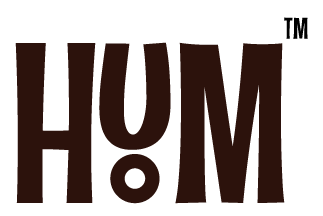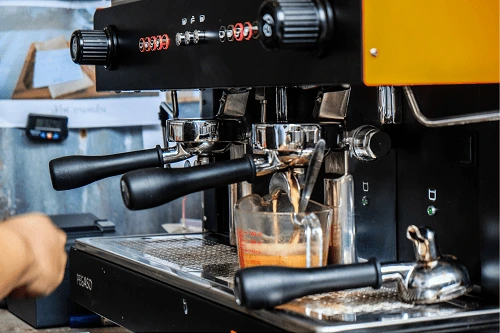Coffee
What is Espresso Coffee Calibration
Espresso coffee calibration is a crucial process in the world of specialty coffee. It involves adjusting various parameters to achieve the perfect shot of espresso. Whether you’re a barista or a coffee enthusiast, mastering the art of espresso calibration can greatly enhance your coffee brewing skills. In this article, we will delve into the intricacies of espresso coffee calibration and provide you with practical tips to become a master of this craft.
1. Introduction
Espresso, often referred to as the “purest form of coffee,” is a concentrated beverage known for its intense flavor profile and velvety texture. Achieving consistency and perfection in every shot of espresso requires precise calibration of multiple variables. By understanding and mastering these parameters, you can extract the best flavors from your coffee beans and create a truly remarkable cup of espresso.
2. Understanding Espresso Coffee Calibration
2.1 The Importance of Calibration
Coffee calibration is essential because it ensures that each shot of espresso is brewed with consistency and accuracy. Calibrating the espresso machine and grinder allows you to control variables such as grind size, water temperature, shot volume, and extraction time. This level of precision enables you to fine-tune the brewing process and extract the desired flavors from the coffee beans.
2.2 Parameters for Calibration
To achieve optimal calibration, you need to focus on the following parameters:
- Grind Size: The size of the coffee grounds significantly impacts the extraction process. Finer grinds result in slower extraction, while coarser grinds extract faster. Experimenting with different grind sizes allows you to find the ideal balance for your preferred flavor profile.
- Tamping Pressure: Tamping is the process of compressing the coffee grounds in the portafilter. Consistent and even tamping ensures uniform water flow and prevents channeling, which can lead to under-extraction.
- Water Temperature: The ideal water temperature for brewing espresso is between 195°F and 205°F (90°C and 96°C). Water that is too hot can result in over-extraction, while water that is too cold can lead to under-extraction.
- Brew Time: The duration of the espresso extraction affects the balance of flavors. Adjusting the brew time allows you to control the strength and intensity of your espresso shot.
3. Step-by-Step Guide to Mastering Espresso Coffee Calibration
Now that we understand the importance of calibration let’s explore a step-by-step guide to mastering espresso coffee calibration.
3.1 Selecting Quality Coffee Beans
Start by choosing high-quality coffee beans that suityour taste preferences. Look for freshly roasted beans with a roast date within two to four weeks. Experiment with different origins and roast profiles to find the flavor profile that appeals to you.
3.2 Adjusting the Coffee Grind Size
Grind size plays a crucial role in espresso extraction. Start by setting your grinder to a medium-fine grind size and make adjustments from there. If the extraction is too fast and the espresso tastes weak, make the grind finer. Conversely, if the extraction is too slow and the espresso tastes bitter, make the grind coarser. Fine-tune the grind size until you achieve a balanced extraction.
3.3 Tamping Techniques
Consistent tamping is essential for even extraction. Apply firm and even pressure while tamping the coffee grounds in the portafilter. Use a tamper with a flat base that matches the size of your portafilter. Avoid applying excessive force, as it can lead to uneven extraction.
3.4 Water Temperature and Pressure
Ensure that your espresso machine maintains the proper water temperature and pressure. Most machines allow you to adjust these parameters. Refer to the manufacturer’s instructions to set the optimal temperature and pressure range. Consistency is key, so monitor and adjust these settings as needed.
3.5 Brew Time and Shot Volume
Pay attention to the brew time and shot volume. Aim for a shot volume of around 1.5 to 2 ounces (44 to 59 ml) within a brew time of 25 to 30 seconds. Adjust the grind size and tamping pressure to achieve the desired shot volume and brew time. Keep in mind that these parameters may vary based on personal preference and the characteristics of the coffee beans.
4. Troubleshooting Common Espresso Coffee Calibration Issues
Despite your best efforts, calibration issues may arise. Here are some common problems and their potential solutions:
4.1 Under-Extracted Espresso
If your espresso tastes weak and lacks flavor:
- Grind the coffee finer to slow down the extraction.
- Increase the brewing time slightly.
- Ensure proper tamping to create a more even extraction.
4.2 Over-Extracted Espresso
If your espresso tastes bitter and harsh:
- Grind the coffee coarser to speed up the extraction.
- Decrease the brewing time slightly.
- Check the water temperature to ensure it’s within the optimal range.
4.3 Uneven Extraction
If you notice inconsistencies in extraction:
- Double-check your tamping technique for evenness.
- Adjust the distribution of coffee grounds in the portafilter.
- Consider experimenting with different pre-infusion methods to promote even extraction.
5. Advanced Techniques for Espresso Coffee Calibration
Once you’ve mastered the fundamentals of espresso calibration, you can explore advanced techniques to further enhance your coffee brewing skills. Here are a couple of techniques to consider:
5.1 Distribution Techniques
Investigate various distribution techniques to achieve an even bed of coffee grounds before tamping. These techniques, such as WDT (Weiss Distribution Technique) or stockfleths, help minimize channeling and promote consistent extraction.
5.2 Pre-infusion Methods
Pre-infusion involves wetting the coffee grounds with a small amount of water before applying full pressure during extraction. This technique allows for a more even extraction and can enhance the flavors in your espresso.
6. Conclusion
Mastering espresso coffee calibration is a journey that requires patience, practice, and a deep understanding of the variables involved. By paying attention to grind size, tamping pressure, water temperature, brew time, and shot volume, you can unlock the full potential of your coffee beans and create exceptional espresso shots. Remember to experiment, take notes, and make adjustments to achieve the perfect balance of flavors.
FAQs
- What is the ideal brewing temperature for espresso? The ideal brewing temperature for espresso is between 195°F and 205°F (90°C and 96°C).
- How do I know if my espresso is under-extracted? Under-extracted espresso often tastes weak and lacks flavor. It may also have a sour or acidic taste.
- What causes over-extraction in espresso? Over-extraction in espresso can be caused by too fine of a grind, excessive brewing time, or high water temperature. It can result in a bitter and unpleasant taste.
- Why is tamping important in espresso calibration? Tamping ensures even distribution and compaction of coffee grounds in the portafilter. It helps to create a consistent and controlled flow of water through the coffee bed during extraction.
- Can I use any type of coffee beans for espresso? While you can technically use any type of coffee beans for espresso, it is recommended to use beans specifically labeled as espresso blends or single-origin beans known for their espresso-friendly characteristics.

